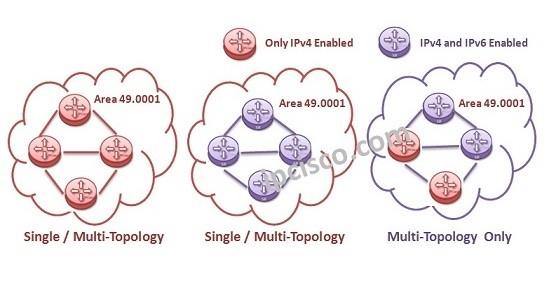- COURSES
- SPECIALS
- BLOG
- MEMBERS
- SHOP
- ABOUT
- ENROLL HERE

Table of Contents
ISIS is one of the important Link-State protocols. With entrence of IPv6 to the network world, Intermediate System to Intermediate System also need to uptade itself for this new Routed protocol. So, ISIS for IPv6 is developed. In this lesson, we will focus on theorical parts of this IPv6 Routing Protocol. In another lesson, we will learn ISIS for IPv6 Configuration on Cisco Routers.
Basically, ISIS for IPv6 is similar to previous version of ISIS, before this enhancement. But in this enhanced version of ISIS, there are some differences for IPv6 support. In this article, we ll focus on these extensions.
Let’s see the import extensions of IPv6 one by one.
You can also test your IPv6 Knowledge on IPv6 Questions Page.
ISIS for IPv6 is the enhanced version of ISIS, that support IPv6 routing. With Enhanced ISIS enhancements, ISIS advertise both IPv6 prefixes and the previous IPv4 and OSI prefixes. In the previous version of Intermediate System to Intermediate System, only IPv4 and OSI prefixes were being advetised.
Basically, address families supported by Intermediate System to Intermediate System is increased with this ISIS for IPv6 enhancements.
Formerly, Intermediate System to Intermediate System uses the same topology for both IPv4 and IPv6. It assume that all the routers in the topology must support both IPv4 and IPv6. With single topology, a single SFP per level were used for both IPv4 and IPv6. The configurations of the routes might be done for both of these protocols.
With Multi-Topology extension in Intermediate System to Intermediate System, this situation has changed. Now, each protocol, IPv4 and IPv6 can has different topology and according to this, they have individual SPF.
Single topology and Multi-topology has some different characteristics. What are these differences?
From the single mod to multi-topology mode, all IPv6 enabled routers must enable multi-topology mode and they must be configured with “transition” command.
In ISIS for IPv6, new topology ID is given to IPv6 topology. Now, the topologies are like below:
Leave a Reply